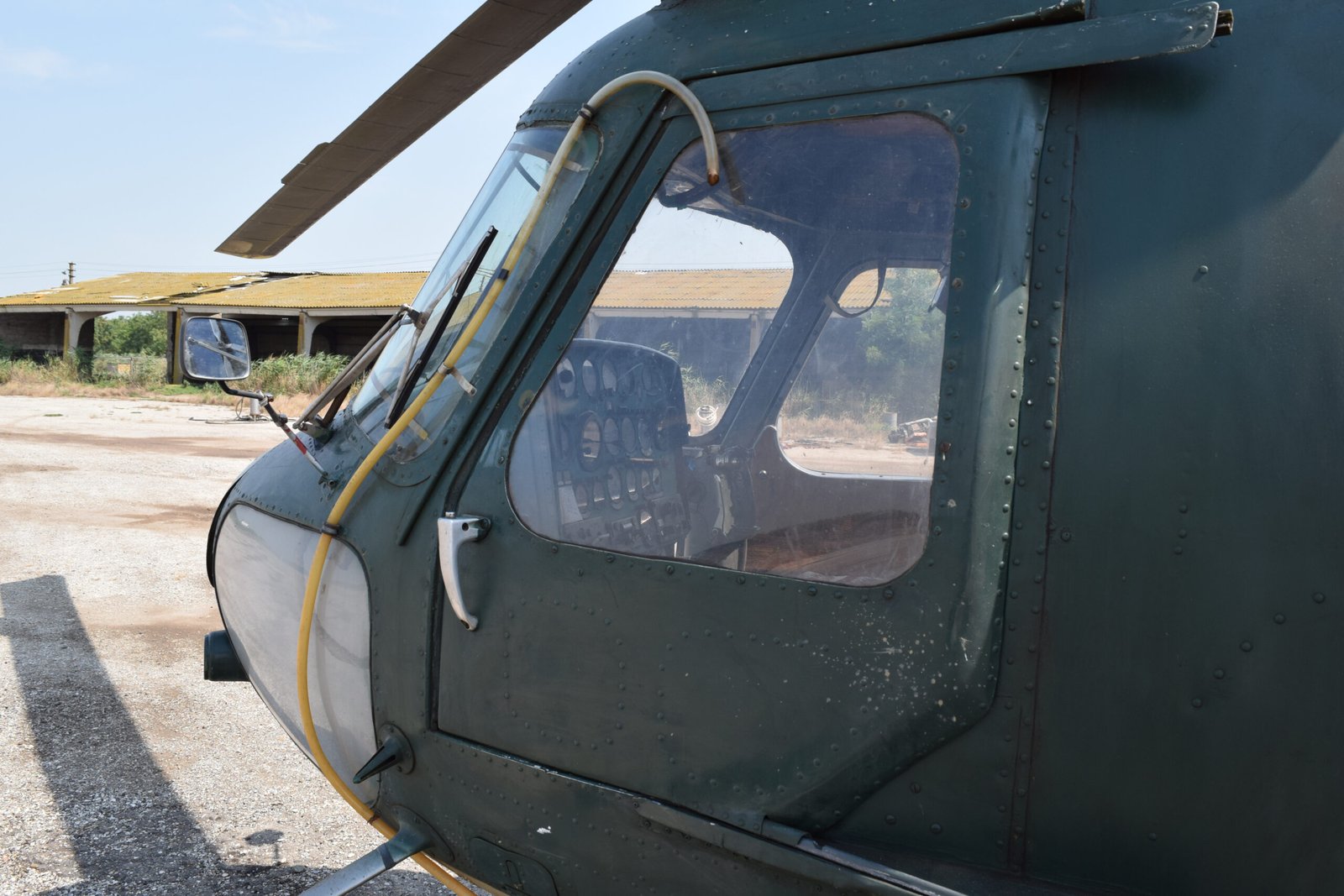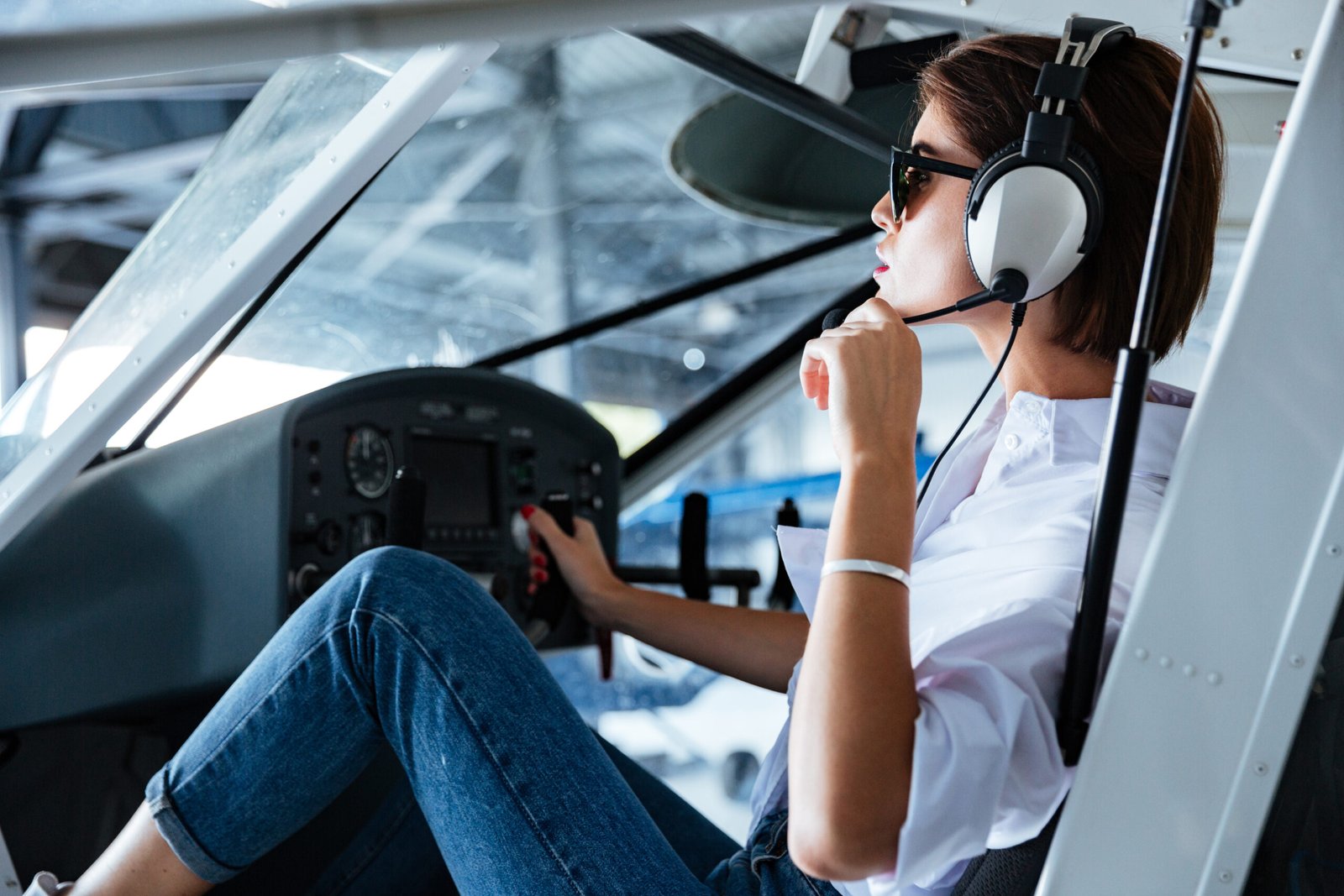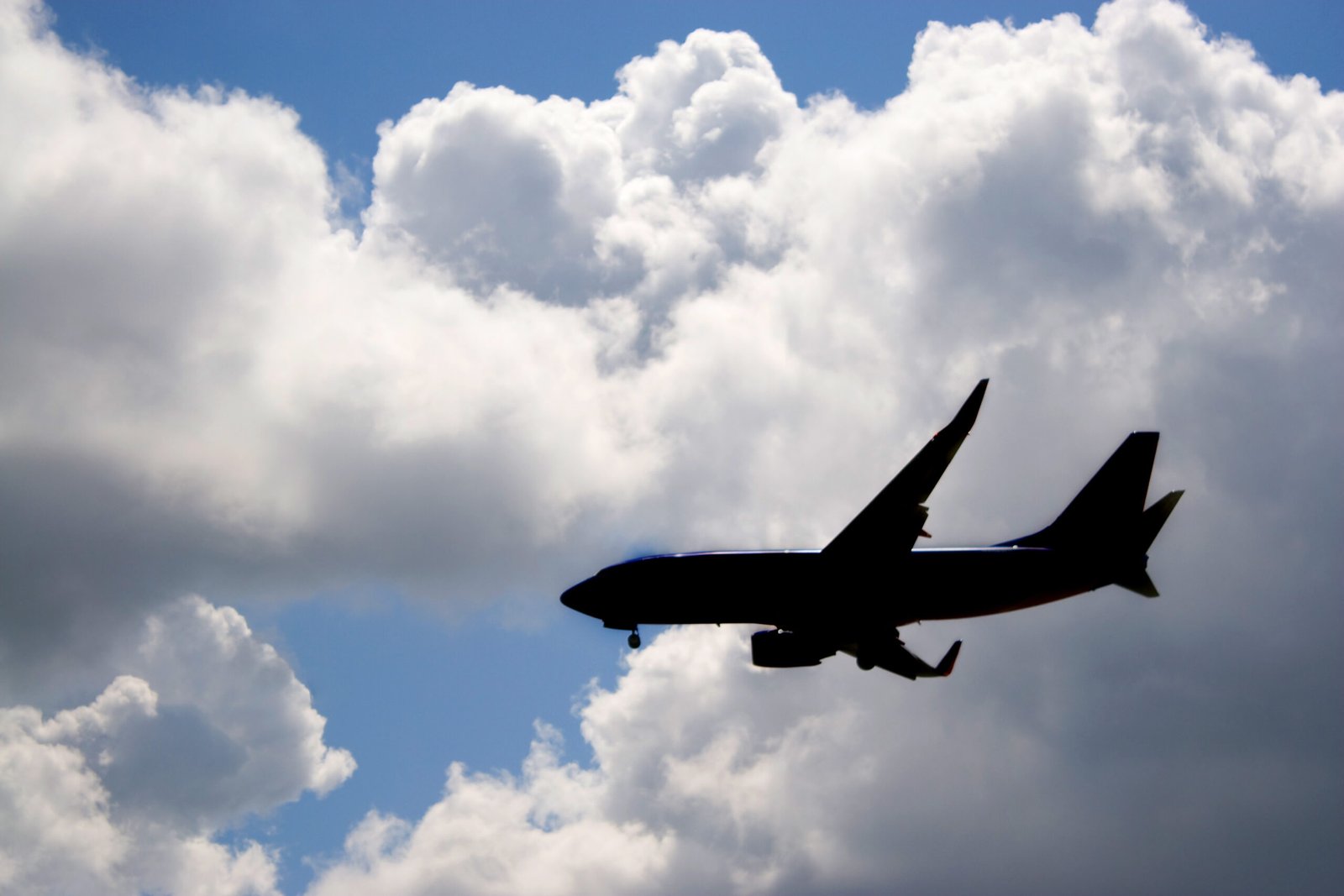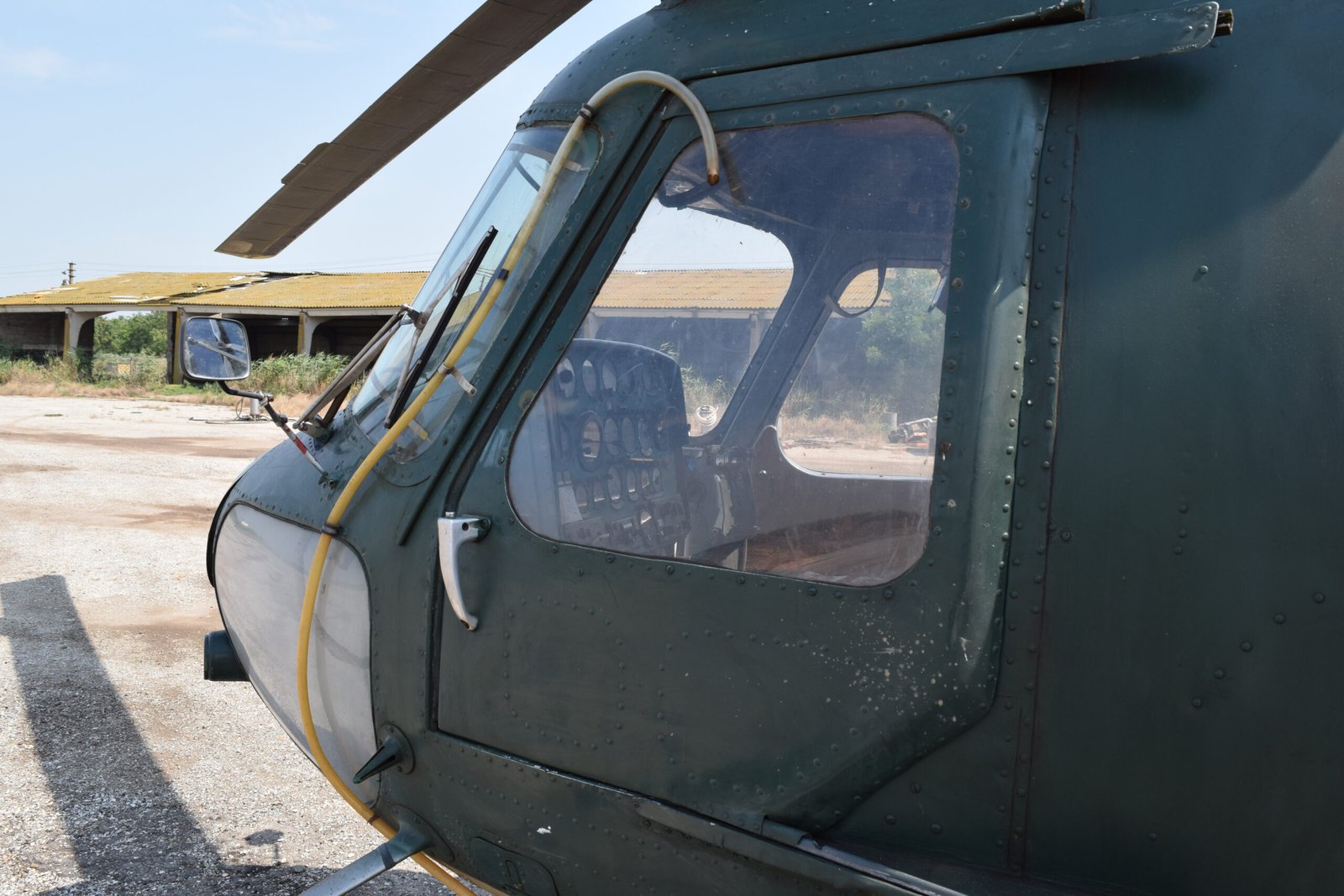Social Media
Exploring the World from Above: The Rise of Drone Delivery Services
In a world that craves convenience, the aviation industry has soared to new heights, merging cutting-edge technology with innovative service models. One fascinating development is drone delivery services, which are transforming how we think about logistics and transportation. As drones become more prevalent in our skies, understanding the foundational elements of aviation technology and training becomes essential.
Aviation today is not just about flying planes; it’s a blend of science, technology, and creative problem-solving. Aspiring aviators often start their journeys through simulators—virtual platforms that replicate real-world flying experiences without leaving the ground. These simulators have evolved dramatically over the years, providing realistic environments that help students grasp complex concepts while honing their skills. From basic flight maneuvers to advanced navigation techniques, simulators offer an invaluable tool for both novice pilots and seasoned professionals seeking to sharpen their expertise.
If you’re interested in diving deeper into aviation topics or keeping up with industry trends, numerous blogs and websites cater to enthusiasts and professionals alike. Some noteworthy mentions include “Airliners.net,” where aviation photography meets discussions on commercial air travel. Another great resource is “The Aviation Herald,” offering insights into accident reports and safety information. Additionally, social media platforms host vibrant communities such as “FlyByWire” on Twitter or various Facebook groups dedicated to pilot training and aircraft appreciation.
For those looking to break into the field—or simply expand knowledge—online aviation courses have flourished in recent years. Ground schools like King Schools or Jeppesen provide comprehensive programs covering everything from private pilot licensing to instrument ratings. Increasingly popular are MOOCs (Massive Open Online Courses) offered by institutions like Embry-Riddle Aeronautical University that cover diverse topics within aviation management and aerospace studies. With flexibility at your fingertips, these online options make it easier than ever for individuals to gain valuable skills at their own pace.

Of course, no discussion about modern aviation would be complete without mentioning job opportunities available for pilots today. The demand for qualified aviators continues to grow alongside technological advancements in air transport systems. According to forecasts from the FAA (Federal Aviation Administration), thousands of new pilots will be needed in the coming years due to retirements and increased air traffic demands—a golden opportunity for aspiring aviators!
As we embrace this new era of aerial innovation, drones have emerged as game-changers in delivery services across various sectors—from e-commerce giants delivering packages directly to doorsteps within hours to medical supplies reaching remote areas quickly and efficiently. The FAA plays a crucial role here too; they regulate drone operations ensuring safety while encouraging innovation through initiatives like Part 107 certification for commercial drone pilots.
For anyone wanting more information on regulations or educational resources related specifically to drones, visiting the official FAA website is imperative. They provide guidelines not only on operations but also on legalities surrounding drone usage—essential knowledge for those venturing into this exciting field.
With each passing day, the synergy between aviation technology and everyday life strengthens exponentially. Whether you’re considering becoming a pilot or simply fascinated by how drones reshape logistics infrastructure worldwide—the sky’s truly no longer the limit! Embrace this thrilling journey above us—it’s boundless!
Flight Paths: How Aviation is Shaping Global Connectivity
In an era where the world feels smaller than ever, aviation plays a pivotal role in knitting together distant regions, cultures, and economies. The advancements in technology not only enhance safety and efficiency but also shape the future of global connectivity. As we soar through the skies, let’s explore how aviation technology training, online resources, and emerging trends like drones are revolutionizing this industry.

Aviation technology has come a long way since the days of wooden biplanes. Today’s pilots rely heavily on sophisticated simulators that replicate various flying conditions and scenarios. These state-of-the-art training tools allow aspiring aviators to hone their skills without leaving the ground. Simulators provide a risk-free environment for learning, enabling pilots to navigate thunderstorms or emergency situations while receiving real-time feedback from instructors. This shift towards virtual training is not just cost-effective; it enhances safety by ensuring that pilots are well-prepared before they take to the skies.
For those looking to delve deeper into aviation beyond traditional flight schools, a plethora of online courses and ground schools are available at your fingertips. Platforms such as Coursera and Udemy offer specialized courses covering everything from aerodynamics to air traffic control principles. The flexibility of these programs allows individuals to learn at their own pace while balancing other commitments—perfect for those aspiring to become certified pilots or aviation professionals.
In addition to formal education, staying informed about industry trends is crucial for anyone passionate about aviation. A wealth of blogs and websites can serve as invaluable resources for insights into current events, technological advancements, and career advice within the field. Some notable mentions include:
1. **AirlineGeeks.com** – Provides up-to-date news on airlines around the globe.
2. **ThePointsGuy.com** – Focuses on travel tips and maximizing loyalty points.
3. **FlyingMagazine.com** – Offers expert reviews on aircraft along with pilot stories.
4. **PPRune.org** – A popular forum among pilots where they share experiences and advice.
5. **AviationWeek.com** – Delivers in-depth analysis of aerospace developments.
Social media platforms also play a significant role in connecting aviation enthusiasts worldwide. Twitter accounts like @AeroNewsNet keep followers updated on breaking news, while Instagram profiles such as @PilotLife showcase stunning aerial photography alongside glimpses into a pilot’s daily life.

As we explore further into modern aviation landscapes, drones are proving transformative—opening new avenues for connectivity and commerce while raising questions about regulations and airspace management. Drones have found applications beyond mere recreational use; industries such as delivery services, agriculture, surveillance, and even emergency response have started integrating unmanned aerial vehicles (UAVs) into their operations.
For those intrigued by this burgeoning sector or considering a career in piloting drones commercially, it’s essential to understand FAA regulations governing drone usage. The Federal Aviation Administration provides comprehensive resources online that cover licensing requirements for remote pilots (Part 107 certification), safety guidelines for drone operation, and tips for navigating airspace restrictions.
So whether you’re an aspiring pilot eager for knowledge or simply a curious traveler keen to understand more about our interconnected world through aviation—there’s never been a better time to get involved in this dynamic field! With technology advancing rapidly alongside educational opportunities expanding infinitely—aeronautical dreams can be transformed into reality faster than ever before! Embrace your passion today; who knows where your flight path may lead?
Wings of Change: How Aviation is Transforming Global Travel
In the ever-evolving landscape of travel, aviation stands at the forefront, catalyzing a transformation that reshapes how we explore our world. With technological advancements, innovative training methods, and a burgeoning interest in drones, the future of aviation is as thrilling as it is complex. Let’s delve into how these elements are revolutionizing global travel.
One of the most significant shifts in aviation today stems from enhanced technology training. Gone are the days when pilots relied solely on traditional flight school experiences. Modern simulators have taken center stage in pilot training programs worldwide. These high-tech devices provide an immersive learning environment where aspiring aviators can practice various flight scenarios without ever leaving the ground. From emergency landings to navigating inclement weather, simulators offer invaluable hands-on experience that prepares pilots for real-world challenges.

For those eager to dive deeper into the world of aviation, a plethora of online resources awaits. Numerous blogs and websites cater to both enthusiasts and professionals alike. Websites like Aviation Week and FlightGlobal deliver industry news while blogs such as AirlineReporter and The Points Guy offer insights into travel trends and tips for maximizing benefits from loyalty programs. Social media platforms amplify this knowledge-sharing; follow accounts like @AviationDaily on Twitter or @AirplaneMode on Instagram for daily doses of aerial inspiration.
If you’re considering a career as a pilot or wish to further your aviation education, there’s no shortage of online courses available today. Institutions like Embry-Riddle Aeronautical University offer comprehensive programs ranging from private pilot certifications to advanced degrees in aeronautics. Ground schools provide essential knowledge about aircraft systems, navigation techniques, and regulations governed by authorities such as the Federal Aviation Administration (FAA). For those interested in becoming commercial pilots or flight instructors, these educational pathways are critical stepping stones toward achieving your goals.
The increase in drone technology is another exciting facet revolutionizing aviation today. Drones have transitioned from niche gadgets to vital tools across various sectors—including photography, agriculture, delivery services, and even disaster management. Their ability to access hard-to-reach areas quickly has made them indispensable assets in numerous industries. With the FAA actively working on integrating drones into national airspace through updated regulations and safety protocols, it’s clear that their presence will only grow stronger.
A wealth of resources exists for staying informed about drone operations too—check out the FAA’s dedicated pages on remote pilot certification or Part 107 regulations for commercial drone use. Engaging with local UAV communities via social platforms fosters collaboration among enthusiasts looking to share insights or troubleshoot challenges together.
As we embrace this era of rapid change within aviation—driven by technological innovation and evolving educational frameworks—it’s essential not just to keep up but also to participate actively in this dynamic field. Whether you’re aspiring for a cockpit seat or simply enjoy watching planes soar through azure skies, understanding these transformations enriches your appreciation for global travel’s intricacies.

In conclusion, as we stand at this remarkable juncture where tradition meets technology within aviation realms—from sophisticated simulators enhancing pilot training to drones redefining logistics—the wings of change are indeed lifting us into an exciting future filled with possibilities! So buckle up; it’s going to be one exhilarating flight ahead!
Flying Green: How Sustainable Practices are Transforming Aviation
In recent years, the aviation industry has been undergoing a remarkable transformation, driven by the urgent need for sustainable practices. Amidst growing environmental concerns, innovative technologies and education are paving the way for a greener future in flying. From advanced simulators to drones, the landscape of aviation is evolving rapidly.

One of the cornerstones of this evolution is technology training. Flight simulators have become indispensable tools in pilot training programs. These sophisticated machines not only provide aspiring pilots with a realistic flying experience but also allow them to practice emergency procedures and understand complex aircraft systems without any risk. With features that mimic real-world weather conditions and air traffic scenarios, simulators are crucial for preparing pilots to handle challenges they might encounter in actual flight situations. Moreover, as airlines increasingly prioritize sustainability, training programs are beginning to incorporate eco-friendly practices into their curricula.
For anyone looking to dive deeper into the world of aviation or enhance their knowledge about green initiatives within the sector, numerous blogs and websites serve as excellent resources. Notable recommendations include “Airline Reporter,” which covers industry news and trends; “Aviation Week,” offering insights into technological advancements; and “GreenAir Online,” dedicated specifically to sustainable aviation developments. Social media platforms like Instagram and Twitter also host vibrant communities where enthusiasts share insights, experiences, and discussions about sustainable flying practices.
Online courses have surged in popularity over recent years, providing flexible learning opportunities for aspiring pilots and aviation professionals alike. Ground schools now offer comprehensive programs covering everything from aircraft systems to navigation techniques online. Institutes such as Embry-Riddle Aeronautical University provide courses tailored to modern demands—focusing on sustainability as part of their curriculum. Whether you’re aiming for a career as a commercial pilot or exploring roles in airport management or aerospace engineering, these online resources can help you gain valuable knowledge while adhering to your own schedule.
Drones represent another fascinating aspect of this transformative phase in aviation. As unmanned aerial vehicles (UAVs) become more commonplace, industries beyond traditional aviation are leveraging their potential for enhancing efficiency and reducing carbon footprints. Drones are employed in agriculture for crop monitoring; they assist first responders during emergencies; even package delivery services are experimenting with UAVs as an alternative transport method that could reduce road congestion and emissions.

For those interested in pursuing careers within this dynamic sector, job opportunities abound—from piloting aircraft to working on environmental strategies at major airlines. The FAA’s website is an essential resource for aspiring aviators wanting information on regulations, safety guidelines, and certification processes necessary for various roles within the field.
As we witness shifts toward greener practices across all facets of life—including transportation—the aviation industry is stepping up its game with commitment and creativity. By embracing technology-driven solutions like flight simulators and drones while fostering educational opportunities through online courses and ground schools, there’s hope that we can achieve more sustainable air travel without compromising safety or quality.
In conclusion, flying green is not just a trend; it’s becoming an integral part of our future in aviation. With continued innovation paired with education focused on sustainability principles, we can transform how we navigate our skies—ensuring they remain open for generations yet to come!
Wings of Change: How Aviation is Transforming Global Travel
In the ever-evolving landscape of global travel, aviation stands at the forefront, driving innovation and efficiency. From cutting-edge technology to revolutionary training methods, the industry is experiencing a significant transformation that reshapes how we connect with the world.

One of the most notable advancements in aviation has been the integration of high-tech simulators into pilot training programs. These sophisticated tools allow aspiring pilots to experience realistic flight scenarios without leaving solid ground. With immersive environments that mimic real-world conditions—from turbulent weather to complex navigation—the use of simulators provides invaluable hands-on experience while ensuring safety and reducing costs. Training through simulation not only accelerates learning but also enhances decision-making skills, preparing pilots for unexpected challenges they may face in actual flights.
For those seeking knowledge beyond traditional classrooms, numerous online resources have emerged, making aviation education more accessible than ever. Aspiring aviators can explore a variety of online courses and ground schools tailored to all levels of expertise. Websites like Coursera and Udemy offer specialized programs on topics ranging from aircraft systems to air traffic control procedures. Furthermore, organizations such as AOPA (Aircraft Owners and Pilots Association) provide comprehensive educational resources designed for both novice and seasoned pilots alike.
As you dive deeper into this fascinating field, you’ll discover a plethora of aviation blogs and websites that cater to various interests within the industry. For instance, “Airline Reporter” offers insights into airline news and trends, while “FlightGlobal” delivers in-depth analysis on aviation economics and technology developments. Social media platforms are also buzzing with vibrant communities; follow hashtags like #AvGeek or #PilotLife on Twitter or Instagram to join discussions with fellow enthusiasts and professionals. Additionally, forums like PPRuNe (Professional Pilots Rumour Network) serve as platforms for exchanging experiences and advice among pilots worldwide.
With advancements in drone technology further amplifying change within aviation, we witness another layer added to our travel experience. Drones are revolutionizing industries ranging from delivery services to aerial photography—expanding their applications beyond just hobbyist use into essential business operations. As regulations evolve under organizations such as the FAA (Federal Aviation Administration), embracing these unmanned aerial vehicles becomes increasingly viable for commercial enterprises.

Speaking of regulations, staying updated is crucial for anyone involved in aviation—whether you’re an aspiring pilot or a seasoned professional. The FAA provides extensive resources online related to licensing requirements, safety protocols, and regulatory updates which are essential reading material for those interested in pursuing a career in flying or maintaining compliance within their operations.
As job opportunities continue to expand across various sectors of aviation—from commercial airlines seeking qualified pilots to tech companies developing innovative flight solutions—the demand for skilled professionals grows concurrently with technological progressions in this space.
In conclusion, as we soar into an era marked by remarkable changes driven by technology in aviation—be it through enhanced training practices utilizing simulators or groundbreaking contributions made possible by drones—the future looks bright for global travel enthusiasts everywhere! Embrace these wings of change as they elevate your adventures above cloud nine!




